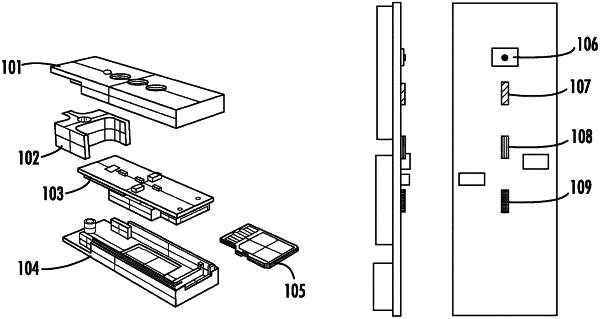| CPC G01N 27/126 (2013.01) [G01N 27/045 (2013.01); C08K 3/041 (2017.05); C08K 2201/001 (2013.01); G01N 33/02 (2013.01); G01N 33/68 (2013.01); G01N 2600/00 (2013.01)] | 18 Claims |

|
1. A device comprising: a food allergen detection platform comprising:
a substrate;
a molecularly imprinted polymer layer in contact with the substrate, the molecularly imprinted polymer layer comprising receptor sites imprinted in a first surface of a polymer, the receptor sites configured to accept a trace molecule of a food allergen;
a non-imprinted polymer layer in contact with the substrate, wherein the non-imprinted polymer layer comprises the polymer which is not imprinted with receptor sites;
a sensor chip comprising the molecularly imprinted polymer and the non-imprinted polymer, which is configured to detect the presence of the trace molecule upon binding to one or more of the receptor sites on the molecularly imprinted polymer; and
a recess configured to house the sensor chip wherein the recess has a first portion for housing the sensor chip in a first position and a second portion for housing the sensor chip in a second position, the first and the second portions being linked such that the sensor chip is moveable from the first position to the second position in the recess.
|